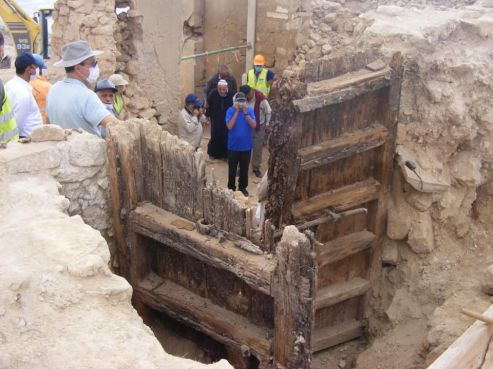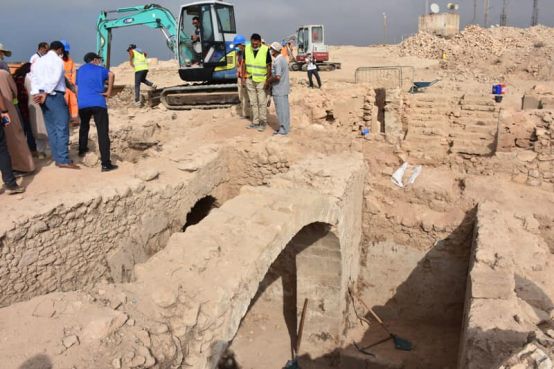Excavations carried out by a team of Moroccan and Spanish archaeologists, as part of a rehabilitation operation of the Kasbah of Agadir Oufella and its surroundings, have revealed the main entrance to the Kasbah as well as a large wooden gate.
According to photos published by the Municipality of Agadir, the team in charge of the excavations also discovered the remains of a wall and a Mihrab, a semicircular niche in the wall of a mosque that indicates the qibla, dating back to the Saadi dynasty. The latter ruled Morocco from 1549 to 1659 and from 1509 to 1549, they had ruled only in the south of the country.
«The gate of the Kasbah of Agadir Oufella dates back to the Saadi period (16th century)», said Naima Fatthaoui, vice-president of the municipality of Agadir, who is also in charge of cultural affairs within the department. She indicated that this door, called «Aggour», was found in the state it was in at the time of the earthquake that struck the capital of Souss on the night of February 29, 1960».
«One of its doors is open and the other is closed, it is a thick wooden gate, brown in color, and its edges have been eroded by time and the rain during the past sixty years», she explains.
Saadian ramparts
She also announced that the excavations revealed the remains of a wall from the Saadi era, the ramparts «Tissouak», the mihrab of the mosque «Talimamt» as well as a part dedicated to ablutions. The official also reported that «a large 'Azrg' wheel was found on the other side, usually used by women to grind grain, on the side facing the sea».
The works of the architectural rehabilitation of the historic site of Agadir Oufella is part of the Urban Development Program of the city of Agadir (2020-2024), launched by King Mohammed VI, for a budget of 5,991 billion dirhams.
The works started in June, with seven weeks of preventive excavations. A bilingual white marble stele in Dutch and Arabic, dated 1746, and which has withstood the onslaught of time, was dismantled on June 30, 2020 due to a state of disintegration of the wall that supported it.
The Kasbah of Agadir Oufella was built by the Saadian sultan Mohammed Ech-Cheikh in December 1540 on the site of an old Portuguese fort. A few months later, in March 1541, the Saadians defeated the Portuguese forces which suffered heavy losses, resulting in their surrender thanks to the installation, in the towers of the Kasbah, of cannons which damaged the Portuguese fleet and put an end to their assault on the Souss coast.





 chargement...
chargement...
















